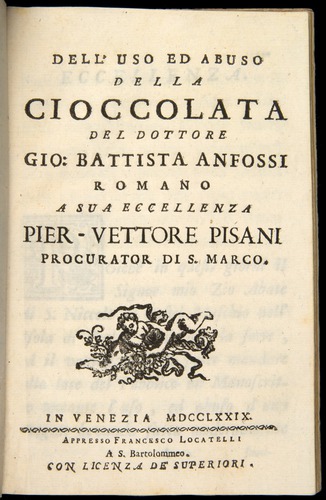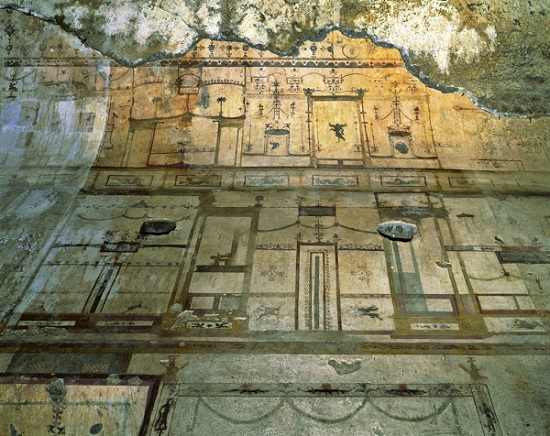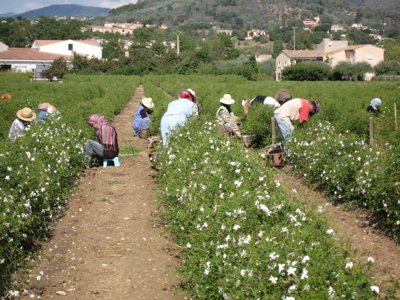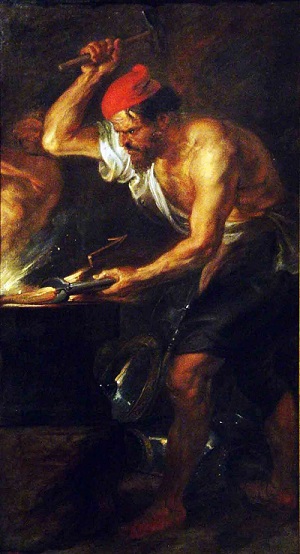We have all heard the comments that a piece of two of dark chocolate are purportedly good for one’s health, but did you know that in 1775 a Venetian published a dissertation praising the health benefits of chocolate? Well, here is a little about that dissertation….
In 1775, Giovanni Battista Anfossi published a medical-historical dissertation entitled On the Use and Abuse of Chocolate, dedicated to the Venetian patrician Pier-Vettore Pisani, the Procurator of San Marco. The Inquisitor General of the Holy Office of Venice approved the manuscript for printing in June 1775. Anfossi’s recipes offer glimpses of how Europeans adapted the flora of the Americas, including cacao and vanilla beans, aromatic flowers, and a variety of spicy chili peppers. The most prominent ingredient they added to the Mesoamerican drink was sugar, whose consumption increased exponentially from the sixteenth century.
Anfossi marvelled that the Spaniards had discovered many good things to make the body healthy. One was chocolate, which the author likened to ambrosia or nectar. In one popular recipe, created by Bartolome Marradón, a doctor in Seville, cinnamon, sugar, pepper, cloves, vanilla, and anise were added to cacao. The measurements were 700 grams of cacao, a pound and a half of sugar, two ounces of cinnamon, fourteen grains of pepper from Mexico called chile or pimento, half an ounce of cloves, three beans of vanilla, or instead of vanilla, two ounces of anise, and a seed called achiote (from the Yucatan, a spice with slightly bitter and peppery textures). Anfossi emphasized that the drink was well received.
There was another chocolate mixture, however, attributed to Antonio Colmenero, a professor in Andalusia, that competed with the first one. In this mixture, for each 100 grams of cacao one added two grains of chili pepper, or peppers of Mexico (which are larger and called chipotle), or if not that then two granules of pepper from India (the latter, he counselled, were less spicy, and different from the Spanish ones); a fistful of anise and two vanilla seeds. Flowers, such as Alexander roses, could be used for flavouring. This mixture also called for two drams of cinnamon, a dozen almonds, a dozen walnuts, a half pound of sugar, and lots of achiote, enough to colour the paste. A third and most simple recipe included twenty pounds of roasted cacao beans, eight pounds of sugar, six ounces of fine cinnamon, then three ounces of vanilla.
Anfossi commented that chocolate was a controversial item of consumption. Some people argued that it was too spicy; others that it was too viscous. Anfossi, however, reminded readers that chocolate was nutritious and was a daily staple before the Spanish arrived in America. He believed that the inhabitants who ground cocoa beans lived to be 100 years old. Anfossi also addressed the alleged side effects of chocolate consumption, denying that it caused constipation, weak stomach, loss of breath, or adverse effects on women’s uteruses. Green cacao beans might cause such difficulties, just as it was not healthy to eat raw beets, squash, or onions. Cacao, Anfossi concluded could help digestion and stimulate the appetite. Moreover, it strengthened and nurtured.
So, from a early Venetian who believed in the health benefits of chocolate – have that one more piece!!











